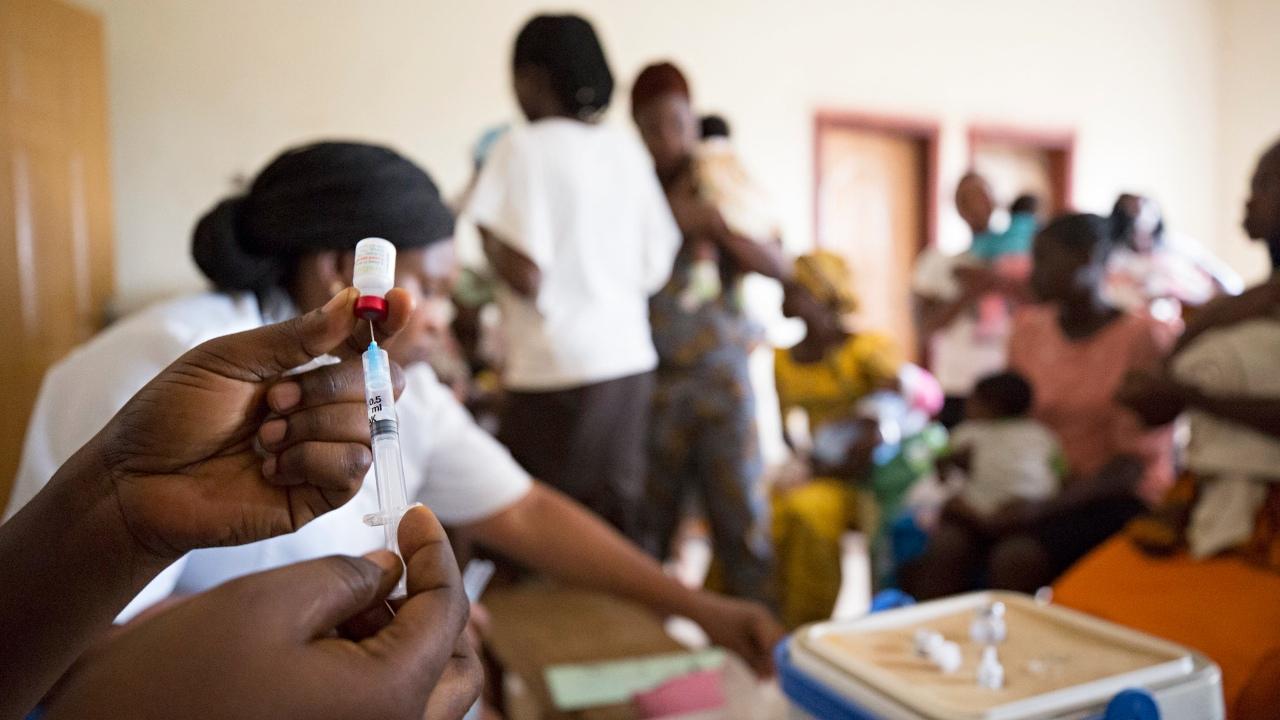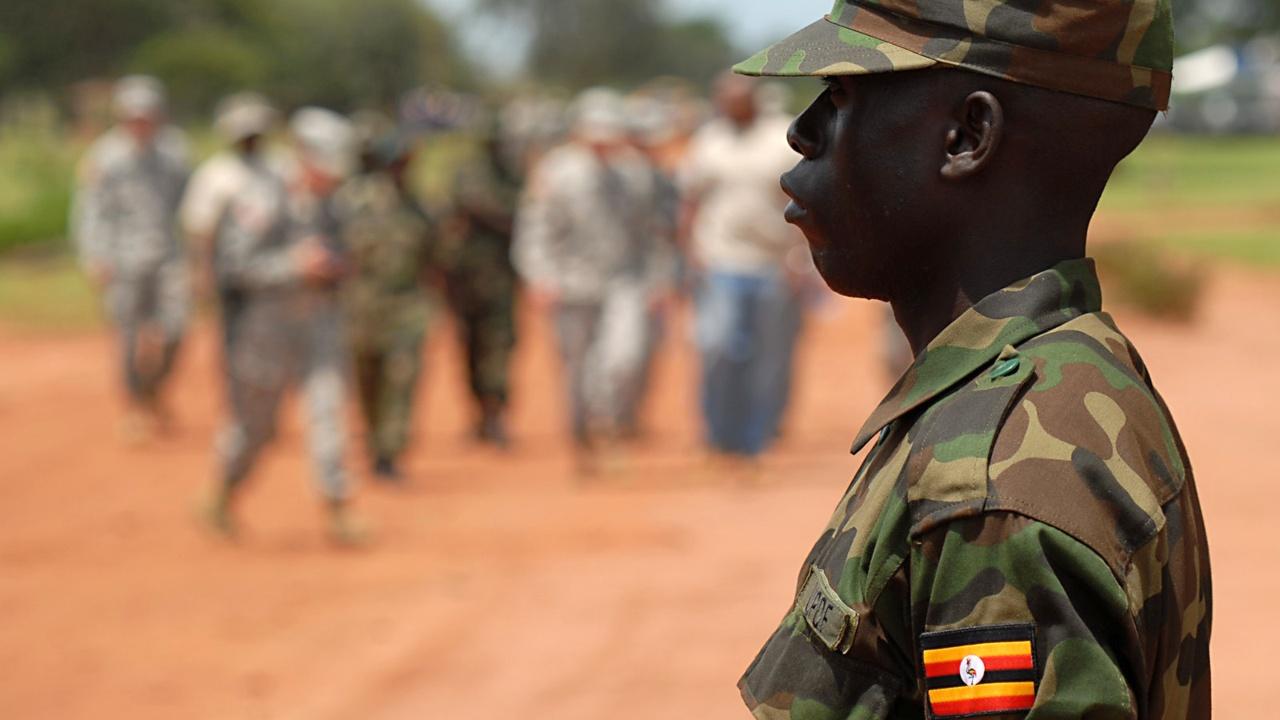In the absence of state infrastructure, grassroots networks play a crucial role in addressing the prevalence of violence against children in Kenya. How do these networks work and how can they be supported to overcome their challenges?
This post is an output from LSE’s Centre for Public Authority and International Development at the Firoz Lalji Centre for Africa.
In much of Africa, where the state plays a limited role in preventing child vulnerability and in-service provision, grassroots informal community-based networks play an important role in addressing violence against children (VAC). I draw on research carried out in 2019-20 with Civsource Africa that focused on the role of different types of networks on the prevention of violence against children in Kenya, showing that while different actors at different levels are networked in the prevention of VAC, grassroots networks are on the front line of preventing and responding to this violence.
However, our research notes that there are challenges in the functionality of these networks, including in the way they interact with other more formal networks working to prevent VAC. These issues need to be addressed, taking care that grassroots networks do not lose their unique identity.
How do grassroots networks work?
Networks are conceptualised as interconnected webs of actors, pooling together for mutual reciprocity in addressing VAC. In our research, there were formal and structured networks that comprised non-state actors like NGOs and other state institutions such as Kenya’s Department of Children Services, the Ministry of Health and actors in the court system.
At the community level, the unstructured grassroots networks included individual community volunteers, child protection volunteers, community-based organisations and community health workers. They also include community-based paralegals, who support children and caregivers in legal redress, as well as opinion leaders who are consulted in issues of violence against children.
These grassroots individuals and groups either worked separately within their communities or were networked with other actors, to whom they reported to or referred issues of child protection. For example, they were working with local community leaders in charge of sub-counties (known as chiefs), the Department of Children’s Services, the Ministry of health, the police and with different NGOs.
Some of these grassroots actors worked as appendages to the state system of child protection. For example, child protection volunteers are selected by the community but vetted by the Children Office and are expected to monitor issues of violence in the community and report to the Children Officers. The community health workers are appointed and vetted by the community during meetings known as Barazas. While some worked independently, they were part of the Ministry of Health strategy for delivering services to the grassroots and therefore expected to take up issues of child abuse and violence and referral to appropriate services. Being selected by the community reinforces the codes of trust that make them accountable to the local population. These actors were therefore expected to give periodic reports on VAC through public meetings.
The financing and capacity arrangements of these structures are diverse. For example, the community-based networks pool together their resources and energy to carry out dialogue in the community and follow up after cases of VAC. Some of them receive funding from the organisations they are affiliated with. Some volunteers working with the NGOs were receiving training, small funding for targeted activities and transport to follow up after cases of VAC. Some of the volunteers and CBOs were also working with several organisations at the same time.
The benefits of community networks
Working independently or through other structures, these grassroots networks of community volunteers build the resilience of children by training them on their rights, offering psychosocial support and identifying cases of violence. They also build bonds that make it easier to address violence, by encouraging the development of positive norms and an ethos of child protection through dialogue on responsibility towards children. They also enhance the community’s collective efficacy in caring for their children through training on income generating activities. The grassroots actors also build bridges by connecting children with the police and other leaders who enforce laws, and probation and children officers who ensure state child protection.
Vertical collaborations with larger networks addressing violence against children enables these networks to draw synergies since some NGOs provide services addressing structural causes of VAC. For example, a CBO in an informal settlement in Nairobi noted that one of the NGOs supported the development of a community VAC alert system. Such collaboration ensures that effort in violence prevention is not just a local exercise but is connected at different nodes, thus ensuring that broader interventions are based on children’s everyday experiences of violence. For example, the child protection volunteers are part of the local Children Area Advisory Council, which is part of the National Council for Children Services, the highest oversight body on children’s issues.
These networks are homegrown and rely on community trust relations and, therefore, enhance faster dissemination of information on VAC at the grassroots level. They also act as first responders or what is seen as the first mile on issues of violence against children in their communities.
Similarly, our research finds that grassroots actors are acknowledged by other actors such as the police, children’s officers and local administrations, who listen to them. This validation is important in accountability to children’s rights since it might help the grassroots actors to check for excesses by such leaders when handling issues of violence, without fear of reprisals.
Overall, these simultaneously local and place-based, vertically integrated and culturally competent responses to violence emerged as important in addressing violence against children. They also, however, face challenges.
Challenges the networks face in addressing violence against children
Due to a lack of adequate resources, including for transport and in some cases support to children facing violence, our research found that some volunteers stopped following up after cases of violence. While some were receiving support from other organisations, most of them used their own resources; some of the larger networks they work with often rely on donor funding and so, when funding ceases, the NGOs moved on, breaking the VAC referral pathways. The NGOs that participated in the research explained that community volunteers are not remunerated since they were seen as serving their communities.
In cases where community-based networks were linked to other structured networks, the playing field was uneven. The volunteers felt that they only participated nominally in these networks and were being ‘used’ as cogs by providing their services and information for writing grants, and then ‘dumped’ after the NGOs received them. This should also be seen through the lens of the philanthropy-wide shifts in Africa where funders require NGOs to demonstrate that they are working with community structures, which supports van Stapele’s research in Kenya where community based organisations characterised the relationship with NGOs as colonialist and saw themselves as ‘donkeys’, engaged in drudgery for the NGOs’ benefit.
In our research, the grassroot actors reported that, to get even, they would hoard information or register their own organisations to access the largesse of donor funds. Such tensions weaken the synergies that would accrue from networking, ultimately affecting efforts to address violence against children.
Even more, while proximity to the community is a resource, it also has a downside; some volunteers reported that they are victimised by the perpetrators of violence.
How to support grassroots networks
Grassroots networks in Kenya play an important role in preventing violence against children, and their work can be a basis for testing innovative models in child protection, and take to scale the prevention of VAC, and therefore they need to be supported. Care should, however, be taken so that systems in these networks that rely on trust are enabled to respond to violence without being undermined.
Efforts should also be made to ensure that collaborations are not only geared towards meeting the needs of external catalysts, such as NGOs, without tangible benefits for children. Further, these networks should not be co-opted into donor funding cycles which may not allow space for innovation because of their short-term and competing motivations.
To address the skewed power dynamics between actors, there is a need for strengthening the accountability of these grassroots organisations, as this will enhance accountability to the community and ultimately to children. There is an imperative for revisiting the very terms on which these organisations are crowded in by other actors.
Photo: A student uses learning aids in class, Kenya. Credit: GPE/Kelley Lynch. Licensed under creative commons (CC BY-NC-ND 2.0).






Another challenge that these grassroot network face is a situation where the formal structures such as the Chiefs or their assistants are involved in VAC. They are a left without anyone structure to report to. In addition, their work is sometimes compromised when the offender agrees with the family of child to deal with the case from the grassroot. The case of VAC is consequently compromised.
Having been involved in child protection work in Kenya for many years now and I can attest to the importance of these grassroots networks and the myriad of community volunteers in fighting VAC. The community based-child protection system in Kenya works, but with serious constraints which Elizabeth correctly identifies. But as much as these system works, the challenges that Elizabeth points are likely to run it aground in the long run. In order to forestall such an eventuality, I take a more critical approach to why the community-based child protection system has come to exist and what ought to be done to address the problems they face currently. The underlying problem starts with the state policies and the way the two main institutions mandated to deal with VAC are organized, funded and managed. In this regard, I single out the Department of Children Services (DCS) and the National Council for Children Services (NCCS). The DCS is grossly understaffed, underfunded and over-committed to managing the Orphans and Vulnerable Children Cash Transfer (OVC-CT) program to the extent that DCS officer’s time is taken up and prioritizes the OVC-CT over any other duties. But rather than fight for greater investments by justifying the need and enormity of the problems faced by children and families, they take the easy option of incorporating NGOs and volunteers, both of which are unsustainable. After all, the OVC-CT only covers about 300,000 households, yet the vast majority of children are living in equally difficult circumstances that also need interventions.
Within the NGO I worked with, a lot of resources went into training new volunteers every year since they need to work across diverse issues and tackle numerous VAC related challenges. In addition, most volunteers are often young people who volunteer as they wait to transition into formal careers or in the hope of being employed after acquiring tertiary level training. When the right opportunities open up they leave and a new team has to be trained. In exceptional cases, volunteers especially those who server as community health workers (CHWs) and traditional birth attendants (TBAs) double up as child protection volunteers. Since CHWs and TBAS tend to be older women and men in the community (such as retired nurses, teachers, and nursing assistants), they are already well established in their communities, have won the community’s trust, are unlikely to move away and have strong work ethics. This group is likely to be more reliable as long as the NGOs do not make untoward demands on them like attending 2 weeks of residential workshops, asking them to spend their own money on transport while they depend on pensions and remittances from their children etc. To support them, the Area Advisory Councils can ensure their transport is covered and the follow up of cases is undertaken by children officers at the sub-county level rather than tasking volunteers with such enormous responsibilities. DCS need to employ more staff at lower levels where services are needed rather than at county level where they are expected to ‘coordinate’ the work of volunteers whom they have no full control over- an arrangement that erodes DCS’s ability to meet the needs of children and families.
Secondly, the relationship between NCCS and DCS is spelt out in the Children’s Act. However, in practice it so quite amorphous leading to overlaps and unhealthy competition for bilateral, multilateral and NGO projects. This organisation at the national level cascades to other administrative levels leading to an overall effectiveness of both institutions and transitory partnerships and alliances. Since networks and volunteers understand this, they also cannot afford to fully invest fully in only one partnership- they spread their risks.
To improve on child protection in Kenya, a rights based approach where citizens’ demand for services as an entitlement is necessary. This demands that government takes better charge of services from the national to the grassroots level and then incorporate volunteers for support- rather than the other way around where volunteers work to build a weak government structure. The DCS can learn a lot from Probation and Aftercare Department whose services are far-reaching especially because they fought and managed to increase the number of social workers/probation officers in the sub-county levels. At the same time, the constitution makes it clear that county governments are responsible for social services. DCS needs to re-evaluate its relationship and structure against devolution and position themselves in a way that child protection- or better yet, children and family services are seen as a priority investment area for long term development of citizens and security the present and future generations. Counties have resources that should and must be tapped into if we hope to improve the situation for children.
Eliud, it is good to know that the structures where they are supposed to report to are also part of the problem in some cases
Irene. Thank you for your useful comments on this issue. Your views on social service workforce are on point. An entitlement approach is surely a good starting point in this discussion as you noted and the state is the final arbiter in this matter. However when it When it comes to answerability, the Non-state actors also have a role to play because of the way they are positioned and/or position themselves in this child protection terrain.
Great points raised in the article and by those who have shared comments. The role of the state is critical in providing services for children while supporting grassroot networks to thrive. The grassroot networks cannot replace state provisioning of children service.